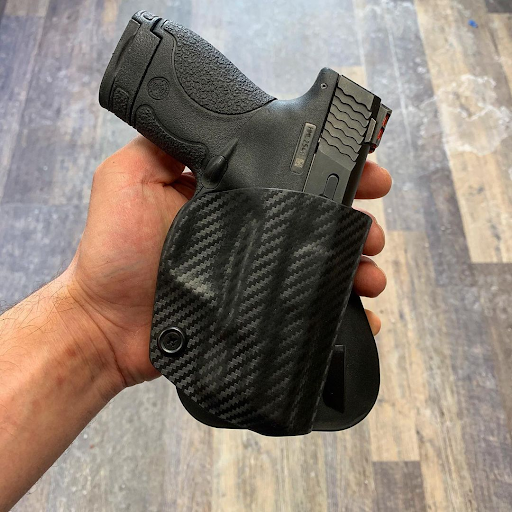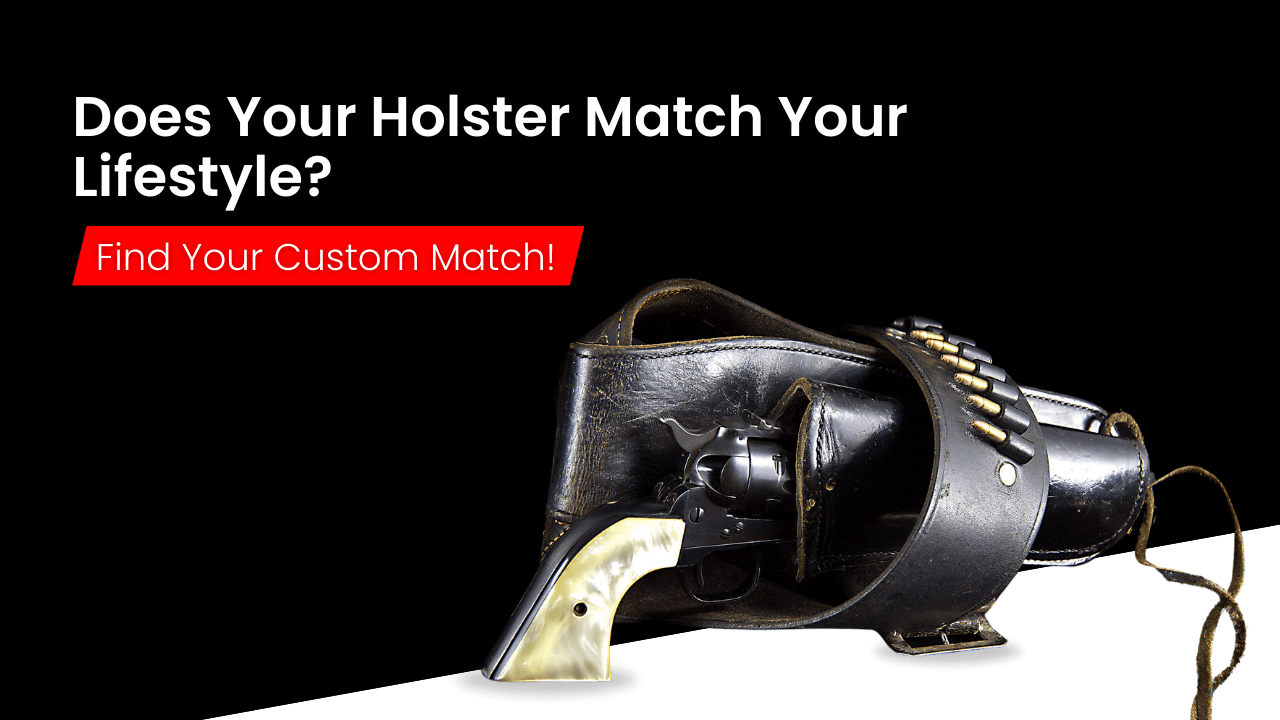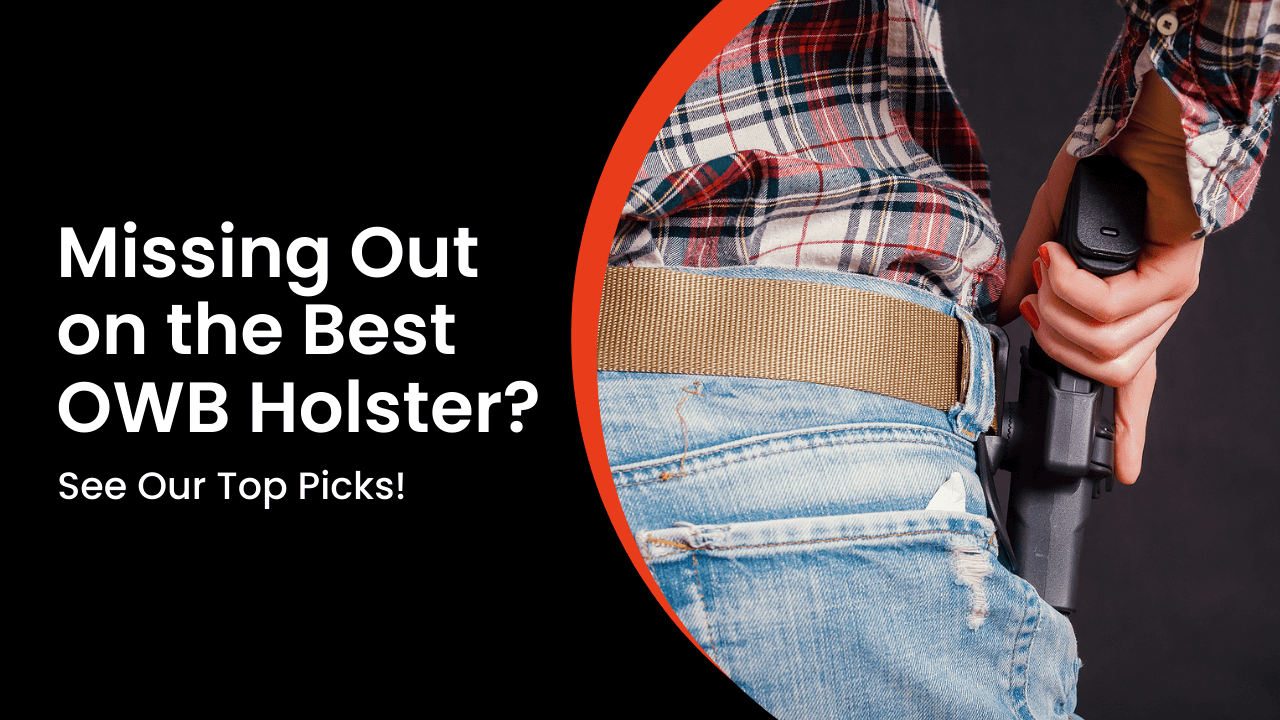What are the Most Popular Types of Holsters for Concealed Carry?
Aug 3rd 2021
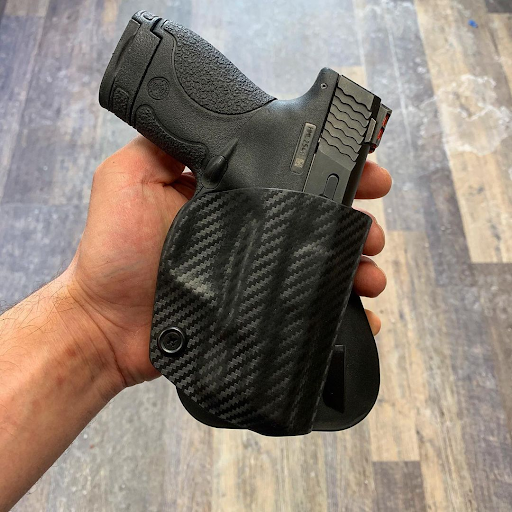
New shooters often find themselves confused and wondering what gear they need to buy, what holster models they should choose, or the advantages and disadvantages of a specific piece of equipment.
Gun holsters are like firearms; many types exist, each fulfilling a different purpose. Some gun holsters are more popular and more practical than others for concealed carrying. If you want to find out which types are the best for you, learn about the most popular concealment holster types, their specs, and pros and cons.
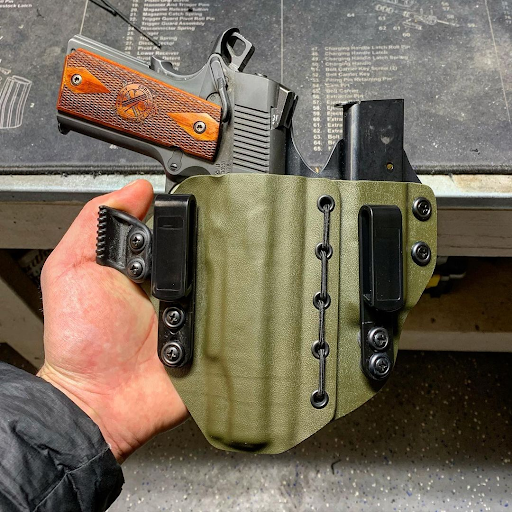
Belt Holsters
The belt holster is the oldest method of carrying a handgun and has existed virtually as long as firearms. Belt holsters are designed around the gun belt, a dedicated belt made of sufficiently strong materials to support the weight of a gun, holster, and additional accessories, such as extra magazines.
In general, you should never use a belt holster without a good-quality gun belt. Never substitute a gun belt with a cheap dress belt because it is highly likely to warp, deform, or fail under the weight of your gun and holster.
Belt holsters fall into two major subcategories: inside the waistband (IWB) and outside the waistband (OWB). IWB and OWB refer to the position of the holster relative to your pants’ waistband. An IWB holster rides on the inside, between your body and your pants, while an OWB holster sits on the outside, only coming in contact with your clothing.
Belt holster positioning and adjustment
Before discussing the types of belt holsters available, it is essential to understand holster positions, which use a clock notation.
The position of your holster is critical to determine your carry method; choosing the right one can make all the difference to make your concealed carry holster as comfortable and hidden as possible.
The clock notation is a mental representation of where your holster is relative to your body. Imagine yourself standing over the center of a large clock laid flat on the ground. The 12 o’clock position points directly in front of you; 3 o’clock is to your right, 6 o’clock is behind you, and 9 o’clock is to your left.
When referring to a holster’s position, a holster at 3-o’clock rides on the right side of your belt, directly over your right hip.
Many carry positions have names, which correspond to specific clock positions (depending on your dominant hand). The most popular are:
- Strong side hip carry: Your holster rides on the hip corresponding to your dominant hand (3 o’clock if right-handed, 9 o’clock if left-handed).
- Appendix carry: Your holster sits directly in front of your body, between the 11 and 1 o’clock positions.
- Behind the hip carry: Your holster rides behind the hip corresponding to your dominant hand but is not directly behind you. 4 or 5 o’clock for right-handed shooters, 7 or 8 o’clock for left-handed shooters.
- Small of the back carry (SOB): Your hoster rides directly behind you, over your spine (6 o’clock position)
Strong side hip carry is the most traditional and most popular belt position, regardless of the belt holster type employed.
In contrast, SOB carry is perhaps the least common, as it presents the most safety risks. When sitting down in a chair or a car seat, the gun presses directly against your spine, making it highly uncomfortable.
The draw stroke is also one of the most difficult to perform safely; most people sweep their own bodies with the muzzle while bringing the gun up to the target. Lastly, if you fall or something hits your back, you risk backing your weapon and holster into your spine, potentially causing severe injury or paralysis.
If you don’t find strong side carry comfortable, try to experiment and find different holster positions and orientations to suit your level of skill and comfort.
Inside the waistband holsters (IWB)
When it comes to CCW holsters, the most common option is perhaps the IWB hip holster. IWB carrying is the most supported and well-documented carry method, and IWB holsters are widespread and available in several materials, including leather, Kydex, nylon, and hybrid holsters.
The primary concept of an IWB holster is to carry it with the shirt tucked over the holster. With the right combination of holster, gun, carry position, cant, and ride height, you can make your firearm disappear under your clothing, leaving only a belt clip as a potential indicator that you’re carrying a weapon. This concept, sometimes referred to as deep concealment, prioritizes hiding your gun from view above all else.
If you choose to carry in the appendix position, you may need a dedicated appendix IWB holster (AIWB). AIWB holsters are better adapted to the shape of your body than a standard IWB holster intended for strong-side or behind the hip carry.
Although IWB holsters can be comfortable and relatively easy to carry every day, comfort is not the main focus of this carry method. If the fit is uncomfortable or tight, you may need to wear pants one size higher than usual and adjust your wardrobe accordingly.
Outside the waistband holsters (OWB)
OWB holsters are the most common holster for handguns intended to be carried overtly. They are the first choice for professionals such as law enforcement, military, security guards, and open-carrying civilians.
Although OWB holsters are intended primarily for open carry, you may be surprised to know that many people also use OWB holsters for concealed carrying. Many professionals, such as plainclothes detectives or FBI agents, have learned to carry concealed with a standard agency-issued holster and sidearm.
The primary reason for choosing an OWB holster for concealment is for comfort. Because the gun does not sit between the body and the inside of the pants, the shooter does not need to wear pants one size larger.
In addition, an OWB holster is better suited for carrying a bigger handgun, such as a full-size pistol, and lets you reach and draw your firearm faster.
However, if you plan to use an OWB holster for concealed carrying, you need to use appropriate concealment techniques to avoid printing or accidentally brandishing.
Examples include using an additional layer of clothing as a cover garment, like a suit jacket, selecting a smaller handgun, a higher ride height, and the right combination of cant and carry position.
Depending on your local weather and climate, some of these techniques may work for you.
Paddle holsters
From a fundamental point of view, a paddle holster is a type of OWB holster. However, they differ significantly from traditional belt-mounted OWB holsters in that they do not use belt loops. Instead, a paddle holster uses a large flat piece of plastic called a paddle, designed to grip your gun belt alone or your belt and waistband together.
The primary advantage of a paddle holster is convenience. The wearer can quickly install and remove the holster without needing to take off their gun belt. If you can’t find a single carry position that is comfortable for you in every situation with a regular belt holster, a paddle holster is an excellent solution. Simply relocate your holster to a more comfortable spot on the fly.
Good-quality paddle holsters are designed to remain on the belt even when forcefully yanked upwards, preventing theft or pulling your handgun with your holster still attached. Some may even feature additional retention features to keep your weapon secured until ready to draw.
The main disadvantage of paddle holsters is their dimensions. They are typically thicker than traditional OWB holsters, causing them to stick out further from your body, resulting in more printing.
Other Holsters
Although belt holsters are the most popular choice for concealed carrying, alternatives are available if wearing a gun belt is not an option.
Ankle holsters
If you’re familiar with law enforcement equipment, you may know that ankle holsters are a popular way to carry a backup gun (or BUG). For civilian concealed carry, ankle holsters have several beneficial features.
An ankle holster lets you conceal a firearm on one of your legs, provided that you wear pants or a lower body garment that covers your ankle. Few people pay specific attention to others’ legs, making ankle holsters relatively unnoticeable.
However, there are many disadvantages. Without pants, an ankle holster becomes visible. Even with pants, if your pant legs ride up while seated, you may accidentally expose your gun.
The practical size of your carry handgun is limited by this holster type as well. Don’t expect to be able to conceal a full-size or even a mid-size pistol easily.
The most significant drawback of an ankle holster is draw speed. You cannot reach your gun from a standing position, forcing you to take a knee, bend down from a seated position, or otherwise maneuver to draw your handgun.
Although it has some merit for carrying a secondary or backup weapon, you shouldn’t rely on an ankle holster as your primary or only means of concealed carrying.
Belly-band holsters
Belly-band holsters are large straps of fabric featuring pockets to carry your handgun, spare magazines, and other small objects, such as your smartphone. They are designed to be worn around your stomach, secured with large hook-and-loop panels, and intended to be worn under a shirt.
Belly-band holsters are ideal for active individuals doing sports or physical activity frequently, such as joggers or hikers, who want to carry concealed while exercising. They are also an excellent choice if you can’t wear a gun belt.
Belly-band holsters are easy to rotate and reposition as needed and can be used to conceal handguns of all kinds, including full-sizes. However, they offer little protection against sweat and may not be suitable for all body types. Most belly-band holsters only fit a specific maximum belly circumference (typically 54” to 56”).
Pocket holsters
A pocket holster lets you carry a concealed firearm in your pocket. However, more than simply a sleeve inside a pants pocket, a pocket holster is designed to maintain safety and retention.
Pocket holsters can fit in any of your front or back pockets and make it easy to carry a concealed firearm. The holster hides the distinctive shape of your handgun and sits deep enough in your pocket to prevent the butt from poking out, revealing what you’re carrying.
The draw stroke is a natural motion that everyone knows: reach inside your pocket and pull the handgun out. Keeping a hand in your pocket also avoids drawing attention, helping with concealment.
However, pocket holsters have many disadvantages: They severely restrict the maximum size of your carry handgun. They also require pants pockets of a specific size and depth, such as those found in men’s pants or cargo pants.
Lastly, you can’t keep any other items in the pocket with the holster for safety reasons. Keeping your holster pocket clean, free of lint or objects that can cause barrel obstructions is critical.
Shoulder holsters
Shoulder holsters are another classic carry method, comprising a set of leather or nylon straps fitted with a holster, worn over your chest. The holster typically rests on the side of your chest opposite of your dominant hand, making it a cross-draw.
If you are seated for most of the day, a shoulder holster is highly convenient, as you don’t have to reach down to your hip, under your shirt, or in a pocket to draw your firearm. It’s also the ideal way to carry extra-heavy handguns, such as long-barreled revolvers.
However, a shoulder holster requires an extra layer of clothing if you wish to use it for concealed carry. Additionally, the design of a shoulder holster means that you are effectively carrying a firearm that points behind you at all times. If you’re concerned about sweeping bystanders with the muzzle, this holster type may not be for you.
Carry Responsibly and Confidently
Incognito Concealment’s mission statement is to provide American citizens with top-quality, 100% US-made Kydex holsters and magazine carriers suitable for IWB or OWB carry. Choose from our wide selection of products compatible with most handguns on the market today.
{ "@context": "https://schema.org", "@type": "BlogPosting", "mainEntityOfPage": { "@type": "WebPage", "@id": "https://www.incognitoconcealment.com/blog/what-are-the-most-popular-types-holsters-concealed-carry" }, "headline": "The Most Popular Types of Holsters for Concealed Carry (CCW Holsters)", "description": "If you want to find out which types are the best for you, learn about the most popular concealed carry (CCW Holsters) types, their specs, and pros and cons.", "image": "https://www.incognitoconcealment.com/product_images/uploaded_images/unnamed-2-.png", "author": { "@type": "Organization", "name": "" }, "publisher": { "@type": "Organization", "name": "", "logo": { "@type": "ImageObject", "url": "" } }, "datePublished": "2021-08-03" }

